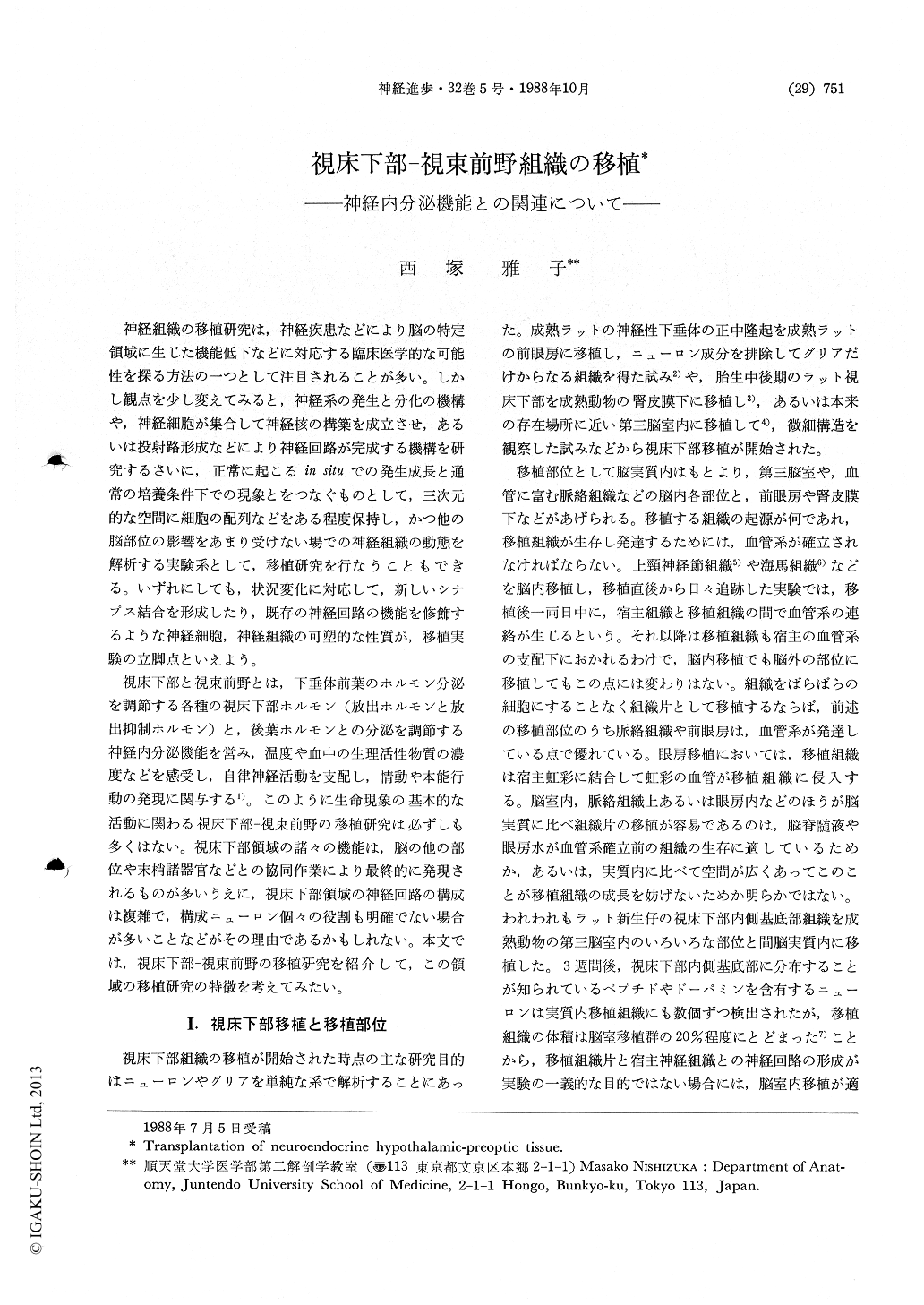Japanese
English
- 有料閲覧
- Abstract 文献概要
- 1ページ目 Look Inside
神経組織の移植研究は,神経疾患などにより脳の特定領域に生じた機能低下などに対応する臨床医学的な可能性を探る方法の一つとして注目されることが多い。しかし観点を少し変えてみると,神経系の発生と分化の機構や,神経細胞が集合して神経核の構築を成立させ,あるいは投射路形成などにより神経回路が完成する機構を研究するさいに,正常に起こるin situでの発生成長と通常の培養条件下での現象とをつなぐものとして,三次元的な空間に細胞の配列などをある程度保持し,かつ他の脳部位の影響をあまり受けない場での神経組織の動態を解析する実験系として,移植研究を行なうこともできる。いずれにしても,状況変化に対応して,新しいシナプス結合を形成したり,既存の神経回路の機能を修飾するような神経細胞,神経組織の可塑的な性質が,移植実験の立脚点といえよう。
視床下部と視束前野とは,下垂体前葉のホルモン分泌を調節する各種の視床下部ホルモン(放出ホルモンと放出抑制ホルモン)と,後葉ホルモンとの分泌を調節する神経内分泌機能を営み,温度や血中の生理活性物質の濃度などを感受し,自律神経活動を支配し,情動や本能行動の発現に関与する1)。このように生命現象の基本的な活動に関わる視床下部—視束前野の移植研究は必ずしも多くはない。
Transplantation studies of the hypothalamic-preoptic area were discussed with special reference to neuroendocrine function of the area. Some studies involve transplantation of neurosecretory neurons from normal donors into mutant animals, which congenitally lack these neurons. In these cases, particularly LH-RH neuron grafting, occurrence of functional recovery in hosts is clearly explained on the basis of the fact that transplanted neurons establish a contact with host's vascular system. In contrast, formation of functional neuronal connection between host brain and neuroendocrine transplants probably remains open to discussion.

Copyright © 1988, Igaku-Shoin Ltd. All rights reserved.


